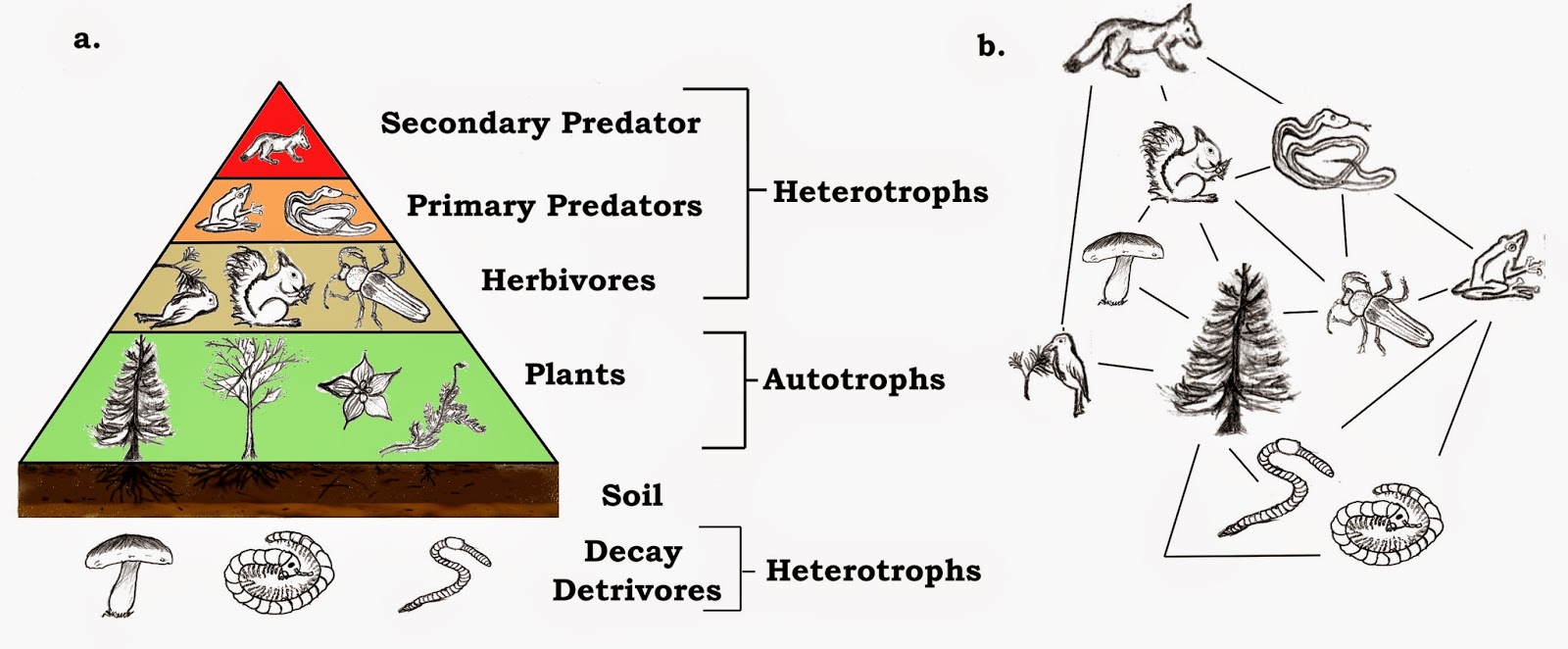The Organization of Ecological Systems - Ecologists can study ecological relationships at several different levels of organization. The smallest living unit is the individual organism. Groups of organisms of the same species are called populations. Interacting populations of different species are called communities. And an ecosystem consists of all the interacting organisms in an area and their interactions with their abiotic surroundings. shows how these different levels of organization are related to one another.
 |
| The Organization of Ecological Systems |
All living things require continuous supplies of energy to maintain life. Therefore, many people like to organize living systems by the energy relationships that exist among the different kinds of organisms present. An ecosystem contains several different kinds of organisms. Those that trap sunlight for photosynthesis, resulting in the production of organic material from inorganic material, are called producers. Green plants and other photosynthetic organisms such as algae and cyanobacteria are, in effect, converting sunlight energy into the energy contained within the chemical bonds of organic compounds. There is a flow of energy from the Sun into the living matter of plants.
The energy that plants trap can be transferred through a number of other organisms in the ecosystem. Because all of these organisms must obtain energy in the form of organic matter, they are called consumers. Consumers cannot capture energy from the Sun as plants do. All animals are consumers. They either eat plants directly or eat other sources of organic matter derived from plants. Each time the energy enters a different organism, it is said to enter a different trophic level, which is a step, or stage, in the flow of energy through an ecosystem. The plants (producers) receive their energy directly from the Sun and are said to occupy the first trophic level.
Various kinds of consumers can be divided into several categories, depending on how they fit into the flow of energy through an ecosystem. Animals that feed directly on plants are called herbivores, or primary consumers, and occupy the second trophic level. Animals that eat other animals are called carnivores, or secondary consumers, and can be subdivided into different trophic levels depending on what animals they eat. Animals that feed on herbivores occupy the third trophic level and are known as primary carnivores.
Animals that feed on the primary carnivores are known as secondary carnivores and occupy the fourth trophic level. For example, a human may eat a fish that ate a frog that ate a spider that ate an insect that consumed plants for food. This sequence of organisms feeding on one another is known as a food chain. Figure 14.4 shows the six different trophic levels in this food chain. Obviously, there can be higher categories, and some organisms don’t fit neatly into this theoretical scheme. Some animals are carnivores at some times and herbivores at others; they are called omnivores.
They are classified into different trophic levels depending on what they happen to be eating at the moment. If an organism dies, the energy contained within the organic compounds of its body is finally released to the environment as heat by organisms that decompose the dead body into carbon dioxide, water, ammonia, and other simple inorganic molecules. Organisms of decay, called decomposers, are things such as bacteria, fungi, and other organisms that use dead organisms as sources of energy.
This group of organisms efficiently converts nonliving organic matter into simple inorganic molecules that can be used by producers in the process of trapping energy. Decomposers are thus very important components of ecosystems that cause materials to be recycled. As long as the Sun supplies the energy, elements are cycled through ecosystems repeatedly. Now that we have a better idea of how ecosystems are organized, we can look more closely at energy flow through ecosystems.









Posting Komentar